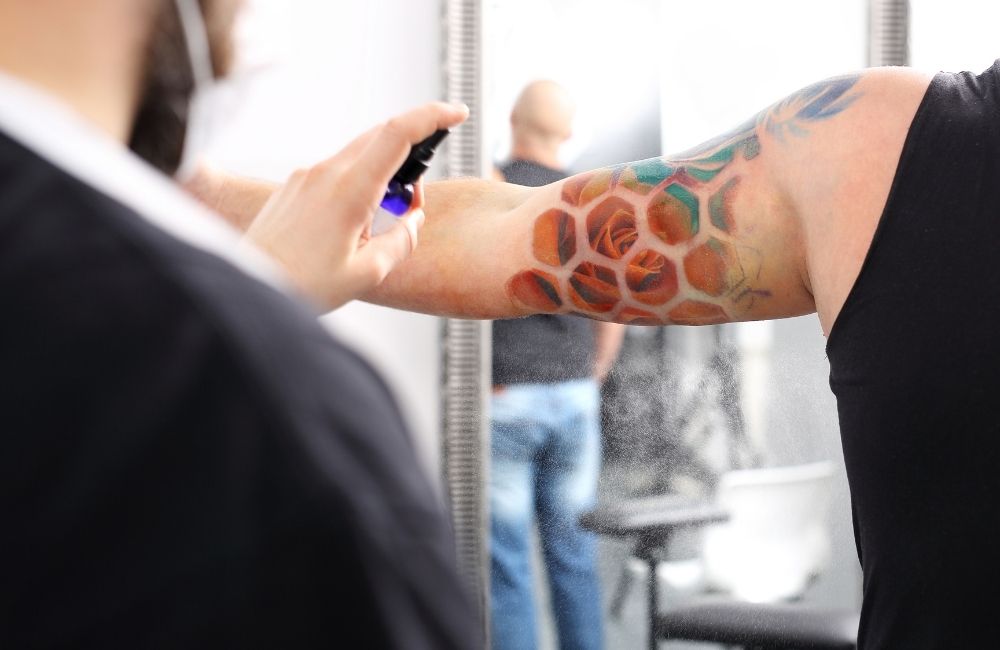
Every person’s skin reacts differently to tattoos. First, an anti-inflammatory cream is applied to the tattoo in the salon. Tattoo artists show their clients what the final result will look like, and after receiving the client’s approval, they apply the best tattoo aftercare and put a protective film on top of it.
As a follow-up treatment, you should apply wound healing cream to inflamed skin 1-2 times daily. Several factors determine how long the healing period will last, including:
- The area where the tattoo is applied. An abdominal pattern, hip pattern, buttocks pattern, or chest pattern has a more efficient healing process. If exposed areas such as the neck, ankles, fingers – complete regeneration may take longer.
- The area of the pattern. The larger it is, the longer the recovery period will be.
- The thickness of lines. As thin lines contain less paint, they heal faster. You should not write off any individual features of the human body, his age, the presence of chronic diseases, etc.
Tattoo Aftercare Tips
To ensure that the loss of the coloring pigment was minimal and the photo tattoo “before” and “after”, made with a difference of several years, pleased, it is important to properly care for the damaged skin in the first days. Though different specialists may take different approaches, a generally accepted recommendation is:
- In the evening or the next day, you should remove the protective film that the handyman has glued on. Some recommend rinsing the irritated skin with antibacterial soap. Rubbing the application area is not allowed, lying in a hot bath – too.
- After the hygienic procedure, you need to remove the moisture with a clean towel and treat the drawing with a special cream for healing.
In no case, you can not scratch the tattoo and deliberately remove the flaky skin. Also, in the first 7 days after the drawing, it is not recommended to go to the bath, sauna, swimming pool, swimming in open bodies of water, tanning.
Stages of healing
Tattoo artists usually describe the process of tattoo healing to clients as follows:
Day 1. The skin is swollen, inflamed. On its surface, there is mucus with impurities of the dye composition. This is dyed sundew, not a washout of dye from the skin, as some people believe.
Day 2. No longer separates the sundew. The skin begins to get used to the dye. You may experience an uncomfortable feeling of tightness. some numbing creams that are used for healing – such as Bepanten Plus – can help.
Day 3. A small crust forms on top of the tattoo. It may itch a lot. It should not be removed and scratched. To remove the discomfort, you can periodically pat the inflamed area lightly with the palm of your hand and apply wound-healing cream to it.
Day 4 to 6. Instead of a film, appears “peeling” – the skin is severely flaky. The color of the image fades (but this is temporary!). There is no need to remove the “husk” – it must fall off by itself.
Successful healing can be measured by the fact that the tattoo no longer itches or peels, and has become comfortable to touch with surrounding healthy skin.